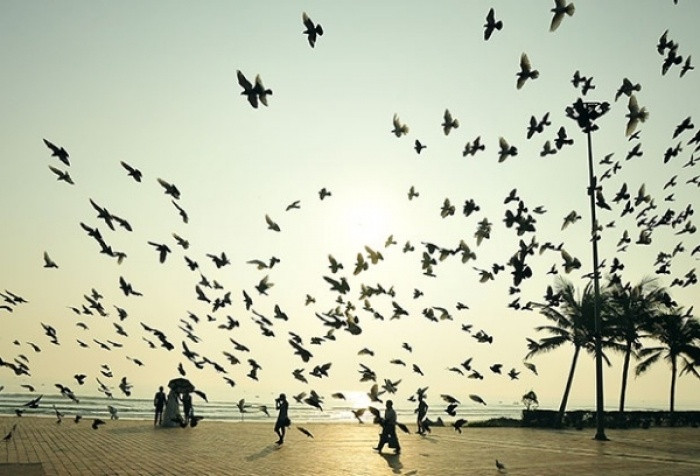Why do we never see baby pigeons?
Pigeon is one of the earliest domesticated animals in history. But most of us only see pigeons with enough wing feathers and not young ones. Why?
Where did all the pigeons go?
"I am always looking for reasons why we never see baby pigeons, something unlike other birds," said Marc Devokaitis, public information specialist at Cornell University, Laboratory. Cornell experience in New York said.
"The simple reason is: Most of the pigeons are in the nest until they have enough feathers and big enough , " Marc said.

Cliffs of Orkney Island, Scotland.
It turns out that pigeons only wiggle in their nests until they are mature enough to migrate to where they own.
However, there are a few species rarely seen such as rock doves (Columba livia acosta) , especially they nest their nests on the ledges or cliffs.
Because they live close to the sea, they spend more time building their nests, the pigeons grow faster and appear less than other birds.

Baby pigeons grow faster and appear less than other birds.
On the British island of Orkney, Scotland, in the nineteenth century, ornithologists discovered that pigeons kicked "a lot, they grew in rock crevices, but their nests were placed at full depths. can't reach them ".
"Before the artificial cliffs and canyons formed, the wild stone pigeons used the caves and ravines or the coastal cliffs to meet the requirements of the plane, covered with cover to live." , Devokaitis told LiveScience.
Nowadays due to the lack of natural cliffs and caves, our city buildings are created and used as a place for wild pigeons to live like churches, buildings or below the bridge, .

Doves today live in cities and are very close to people.
Most pigeons spend between 2 and 3 weeks in the nest. During this time, their parents will eat with the chicks, the mother bird will give them the milk rich in protein and fat that they release.
The pigeon bird will go out after at least 3 weeks to 6 weeks with the help of his mother , Devokaitis said. At that time, the pigeons looked more mature than other birds when they left the nest, and it was difficult to distinguish between them.

You may have seen a baby pigeon that looks like an adult pigeon.
If you pay attention, you might be able to discover our baby birds: "Looks like an incomplete hair loss, dark eyes or dark eyes (adults have orange eyes) and hairs. sharp-pointed (the longest feathers on the bird's wings), " Devokaitis said.
- Birds have lions like lions
- Moscow was shaken by the pigeons 'live zombie'
- Learn about the existence of billions of birds
- Pigeons create meteor shower across New York
- The most expensive pigeon in the world
- Pigeons smell the air to find their way
- Scary finding: Deformed dove feet in urban areas
- Beautiful picture: Lion pigeons' pose
- Use pigeons to measure air pollution levels
- Doves find their way back not by training
- Fascinating the ripe cherry, the pigeon almost choked the neck
- Dove diagnoses standard breast cancer like a doctor
 Animal 'suffering' after hibernation
Animal 'suffering' after hibernation Why do goats climb well?
Why do goats climb well? Scientists were surprised to see chimpanzees eating turtles
Scientists were surprised to see chimpanzees eating turtles Giant catfish died deadly due to drought in Thailand
Giant catfish died deadly due to drought in Thailand